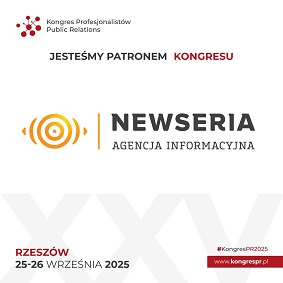Vehicle Theft Crisis in CA, TX, and FL Prompts PSCC to Push Preventive Action
With theft hot spots growing, PSCC urges residents to use layered defense strategies and verify alert notices.
But while CA, TX, and FL are frequently cited as examples, they are not the only regions affected. Numerous other areas across the country face persistent vehicle-related crime, highlighting the need for widespread public awareness and adoption of proactive prevention strategies.
What makes these states especially vulnerable? Experts point to several overlapping factors: large metropolitan regions, proximity to major ports and borders, and extensive highway systems that provide fast escape routes. Cities like Los Angeles, Houston, and Miami serve as key case studies, consistently flagged by law enforcement and insurance providers as high-risk zones for both personal vehicle theft and organized theft networks.
To combat this growing threat, security professionals recommend a layered approach to vehicle protection. A variety of anti-theft solutions are available on the market, ranging from basic visual deterrents to advanced tracking systems. Here are several well-reviewed and widely recommended tools that consumers in high-risk areas are turning to:
• LoJack: Uses radio frequency tech tied to law enforcement for high-rate stolen vehicle recovery.
• CarSmarti: Offers LPR-based recovery systems and chips, often through outreach programs.
• The Club: A visible steering wheel lock that serves as a trusted, low-cost theft deterrent.
• Apple AirTags: Affordable GPS tags discreetly placed in vehicles for location tracking via Apple's network.
• OBD GPS Trackers: Plug-in devices like Vyncs provide real-time vehicle tracking and alerts.
• Faraday Pouches/Key Fob Boxes: Block signals to prevent thieves from capturing key fob codes.
• VIN Etching & Decals: Free or low-cost marking services make vehicles harder to resell if stolen.
• Kill Switches/Battery Disconnects: Disable vehicle start-up unless manually overridden.
Many modern vehicles include built-in GPS, SOS, and navigation features, but these systems alone aren’t enough—experienced thieves can disable or bypass them. That’s why experts stress a layered approach that pairs factory tech with added tools and physical deterrents.
"Our goal is to ensure that high-risk areas have access to the information and tools they need to stay protected," said a PSCC spokesperson. "If a consumer receives a PSCC letter or PSCC notice, it is not a scam. It means their neighborhood has been flagged based on crime reports, data mapping, and insurance claims. It's not a random promotion—it’s a call to action."
When PSCC reaches out, there is often a specific offering or discount available based on area need or provider availability. However, even if someone is not interested in the specific product or offer mentioned, the most important part is raising awareness and encouraging action. Whether or not a consumer takes advantage of an offer, they can still benefit from knowing their risk and reviewing reputable protection tools. Follow us on social media for ongoing tips and recent articles to "stay in the know."
"We believe informed communities are safer communities," the spokesperson added. “It’s about giving credit to quality services and products, when deserved; and raising awareness, encouraging layered protection, and connecting people to trustworthy resources, to aid law enforcement and our communities."
Disclaimer: This article is based on publicly available data and PSCC’s independent research. PSCC is not affiliated with, endorsed by, or sponsored by any of the brands or companies mentioned. All examples are provided solely for informational purposes to highlight available options in the marketplace. This article does not constitute an endorsement or guarantee of any product or service. Information is intended for public education and awareness only.
Joshua Domino
Public Safety Crime Center, LLC
+1 833-721-1060
email us here
Visit us on social media:
LinkedIn
Instagram
Facebook
Legal Disclaimer:
EIN Presswire provides this news content "as is" without warranty of any kind. We do not accept any responsibility or liability for the accuracy, content, images, videos, licenses, completeness, legality, or reliability of the information contained in this article. If you have any complaints or copyright issues related to this article, kindly contact the author above.
Personalized Travel and Experiences Market to Observe Highest Growth of USD 447.3 billion with CAGR of 17.8% by 2030
Smart Factory Market Set to Quadruple by 2032, Driven by 5G, Automation, and Energy Efficiency
Logistics Plus Selected as a Top 100 3PL Provider by Inbound Logistics for a Fourth Year
Więcej ważnych informacji
 Jedynka Newserii
Jedynka Newserii

 Jedynka Newserii
Jedynka Newserii

Konsument

Tylko 35 proc. Celów Zrównoważonego Rozwoju ONZ możliwe do osiągnięcia przed 2030 r. Potrzebna ściślejsza współpraca międzynarodowa
Jak wynika z raportu ONZ, choć w ciągu ostatniej dekady dzięki dążeniu do realizacji przyjętych celów udało się poprawić życie milionów ludzi na całym świecie, to jednak tempo zmian pozostaje zbyt wolne, by dało się je osiągnąć do 2030 roku. Postęp hamują przede wszystkim eskalacja konfliktów, zmiana klimatu, rosnące nierówności i niewystarczające finansowanie. Jak wynika ze sprawozdania Parlamentu Europejskiego, problemem jest także brak ścisłej współpracy międzynarodowej i sceptyczne podejście niektórych państw ONZ.
Przemysł spożywczy
UNICEF: Wszystkie dzieci poniżej piątego roku życia w Gazie cierpią z powodu niedożywienia. Sytuacja jest katastrofalna

Ataki Izraela na Strefę Gazy i jej izolacja doprowadziły do całkowitego załamania podstawowych usług i ograniczenia możliwości dostaw i dystrybucji pomocy humanitarnej – wskazuje UNICEF. W efekcie setki tysięcy Palestyńczyków są w sytuacji ciągłego zagrożenia życia i cierpią z powodu niedożywienia i głodu. Ta klęska dotyczy praktycznie wszystkich dzieci poniżej piątego roku życia. Konflikty są jednym z głównych przyczyn braku bezpieczeństwa żywnościowego, głodu i niedożywienia na świecie. Szczególnie dotyczy to Afryki i Azji Zachodniej.
Prawo
Branża ciepłownictwa czeka na unijną i krajową strategię transformacji. Liczy na większe fundusze i korzystne regulacje

Komisja Europejska zapowiedziała rozpoczęcie w I kwartale 2026 roku prac nad strategią dla ciepłownictwa i chłodnictwa. Nad tym strategicznym dokumentem w zakresie ciepłownictwa pracuje także polski rząd. Branża podkreśla, że obie te strategie będą miały kluczowe znaczenie dla trwającej transformacji w ciepłownictwie, czyli przyszłości ogromnych inwestycji, które czekają sektor do 2050 roku. Jednocześnie apeluje o większe wsparcie tego procesu ze środków publicznych.
Partner serwisu
Szkolenia

Akademia Newserii
Akademia Newserii to projekt, w ramach którego najlepsi polscy dziennikarze biznesowi, giełdowi oraz lifestylowi, a także szkoleniowcy z wieloletnim doświadczeniem dzielą się swoją wiedzą nt. pracy z mediami.


![Nestlé w Polsce podsumowuje wpływ na krajową gospodarkę. Firma wygenerowała 0,6 proc. polskiego PKB [DEPESZA]](https://www.newseria.pl/files/1097841585/fabryka-nesquik_1,w_85,r_png,_small.png)






.gif)

 |
| |
| |
|